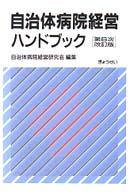- ホーム
- > 洋書
- > ドイツ書
- > Mathematics, Sciences & Technology
- > Chemistry
Full Description
Metal Oxide Semiconductors Up-to-date resource highlighting highlights emerging applications of metal oxide semiconductors in various areas and current challenges and directions in commercialization
Metal Oxide Semiconductors provides a current understanding of oxide semiconductors, covering fundamentals, synthesizing methods, and applications in diodes, thin-film transistors, gas sensors, solar cells, and more. The text presents state-of-the-art information along with fundamental prerequisites for understanding and discusses the current challenges in pursuing commercialization and future directions of this field.
Despite rapid advancements in the materials science and device physics of oxide semiconductors over the past decade, the understanding of science and technology in this field remains incomplete due to its relatively short research history; this book aims to bridge the gap between the rapidly advancing research progress in this field and the demand for relevant materials and devices by researchers, engineers, and students.
Written by three highly qualified authors, Metal Oxide Semiconductors discusses sample topics such as:
Fabrication techniques and principles, covering vacuum-based methods, including sputtering, atomic layer deposition and evaporation, and solution-based methods
Fundamentals, progresses, and potentials of p-n heterojunction diodes, Schottky diodes, metal-insulator-semiconductor diodes, and self-switching diodes
Applications in thin-film transistors, detailing the current progresses and challenges towards commercialization for n-type TFTs, p-type TFTs, and circuits
Detailed discussions on the working mechanisms and representative devices of oxide-based gas sensors, pressure sensors, and PH sensors
Applications in optoelectronics, both in solar cells and ultraviolet photodetectors, covering their parameters, materials, and performance
Memory applications, including resistive random-access memory, transistor-structured memory devices, transistor-structured artificial synapse, and optical memory transistors
A comprehensive monograph covering all aspects of oxide semiconductors, Metal Oxide Semiconductors is an essential resource for materials scientists, electronics engineers, semiconductor physicists, and professionals in the semiconductor and sensor industries who wish to understand all modern developments that have been made in the field.
Contents
Preface ix
1 Metal Oxide Semiconductors: State-of-the-Art and New Challenges 1
1.1 Introduction 1
1.2 n-Type Metal Oxide Semiconductors 1
1.2.1 ZnO 1
1.2.2 SnO2 3
1.2.3 In2O3 3
1.2.4 TiO2 4
1.2.5 Ga2O3 5
1.3 p-Type Metal Oxide Semiconductors 5
1.3.1 Copper Oxides (CuO/Cu2O) 5
1.3.2 SnO 6
1.3.3 NiOx 7
2 Fabrication Techniques and Principles 15
2.1 Introduction 15
2.2 Vacuum-Based Methods 15
2.2.1 Sputtering 16
2.2.2 Atomic Layer Deposition (ALD) 18
2.2.3 Evaporation 21
2.3 Solution-Based Methods 23
2.3.1 0D Oxide Semiconductors 23
2.3.2 1D Oxide Semiconductors 26
2.3.3 2D Oxide Semiconductors 29
2.3.4 3D Oxide Semiconductors 31
3 Metal Oxide Semiconductors for Diodes 39
3.1 Introduction 39
3.2 P-N Heterojunction Diodes 39
3.2.1 Representative Devices 40
3.2.2 Applications 42
3.3 Schottky Diodes 44
3.3.1 Working Mechanisms 45
3.3.2 ZnO Schottky Diodes 46
3.3.3 IGZO Schottky Diodes 49
3.3.4 Ga2O3 Schottky Diodes 51
3.4 Metal-Insulator-Semiconductor Diodes 52
3.4.1 MIS Schottky Diodes 53
3.4.2 MIS Tunneling Diodes 56
3.4.3 Applications 57
3.5 Self-Switching Diodes 59
4 Metal Oxide Semiconductors for Transistors 67
4.1 Introduction 67
4.2 Device Structures and Mechanisms 68
4.3 N-Type TFTs 72
4.3.1 History Overview 72
4.3.2 Composition 74
4.3.3 Low Power Consumption 76
4.3.4 Stability 81
4.3.5 Solution-Based TFTs 84
4.4 P-Type TFTs 89
4.4.1 Copper Oxides 89
4.4.2 Tin Monoxide 92
4.4.3 Nickel Oxide 96
4.5 Circuit Applications 98
4.5.1 Oxide NMOS/PMOS 98
4.5.2 Oxide CMOS 101
5 Metal Oxide Semiconductors for Sensors 115
5.1 Introduction 115
5.2 Metal Oxide-Based Gas Sensors 115
5.2.1 Mechanisms of Gas Sensors 116
5.2.2 VOCs Detection 125
5.2.3 Environmental Pollution Gas Detection 131
5.2.4 Humidity Detection 139
5.2.5 Explosives Detection 141
5.2.6 ChemicalWarfare Agent Detection 146
5.3 Metal Oxide-Based Pressure Sensors 148
5.3.1 Working Mechanisms and Performance Characterizations 148
5.3.2 ZnO-Based Pressure Sensors 151
5.3.3 Other Pressure Sensors 152
5.4 Metal Oxide-Based pH Sensors 153
5.4.1 Working Mechanisms and Performance Characterizations 153
5.4.2 Potentiometric PH Sensors 154
5.4.3 Ion-Sensitive Field-Effect Transistor PH Sensors 155
5.4.4 Chemiresistive/Conductimetric pH Sensors 156
6 Metal Oxide Semiconductors for Solar Cells 171
6.1 Introduction 171
6.2 Solar Cell Principles 172
6.3 Metal Oxide Solar Cells 173
6.3.1 Cu2O Solar Cells 173
6.3.2 CuO Solar Cells 179
6.3.3 Co3O4 Solar Cells 180
6.4 Metal Oxide Functional Layers in Solar Cells 181
6.4.1 Metal Oxide Photoelectrodes in DSSCs 181
6.4.1.1 TiO2 Electrodes 183
6.4.1.2 ZnO Electrodes 186
6.4.1.3 Nb2O5 Electrodes 189
6.4.2 Metal Oxide Carrier Transport Layers in Perovskite Solar Cells 191
6.4.2.1 TiO2 ETLs 193
6.4.2.2 SnO2 ETLs 194
6.4.2.3 ZnO ETLs 195
6.4.2.4 MOs HTLs 197
7 Metal Oxide Semiconductors for Ultraviolet Photodetectors 211
7.1 Introduction 211
7.2 Device Structures of UV Photodetectors 212
7.2.1 Photoconductors 212
7.2.2 Schottky Photodiodes 214
7.2.3 MSM Photodetectors 214
7.2.4 p-(i)-n Photodiodes 215
7.2.5 Avalanche Photodiodes 216
7.2.6 Phototransistors 216
7.3 Important Parameters of UV Photodetectors 217
7.4 Materials and Performance of UV Photodetectors 218
7.4.1 ZnO-Based UV Photodetectors 218
7.4.2 Ga2O3-Based UV Photodetectors 222
7.4.3 TiO2-Based UV Photodetectors 228
7.4.4 WO3-Based UV Photodetectors 231
7.4.5 SnO2-Based UV Photodetectors 232
7.4.6 Other Metal-Oxide UV Photodetectors 234
7.5 Conclusion and Outlooks 237
8 Metal Oxide Semiconductors for Memory Applications 245
8.1 Introduction 245
8.2 Resistive Random-Access Memory 245
8.2.1 Resistive Switching Mechanisms 246
8.2.2 Performance Characterization 248
8.2.3 Representative Devices 249
8.3 Transistor-Structured Memory Devices 254
8.3.1 Working Mechanisms 254
8.3.2 Representative Devices 256
8.4 Other Memory Devices 262
References 267
Index 273







